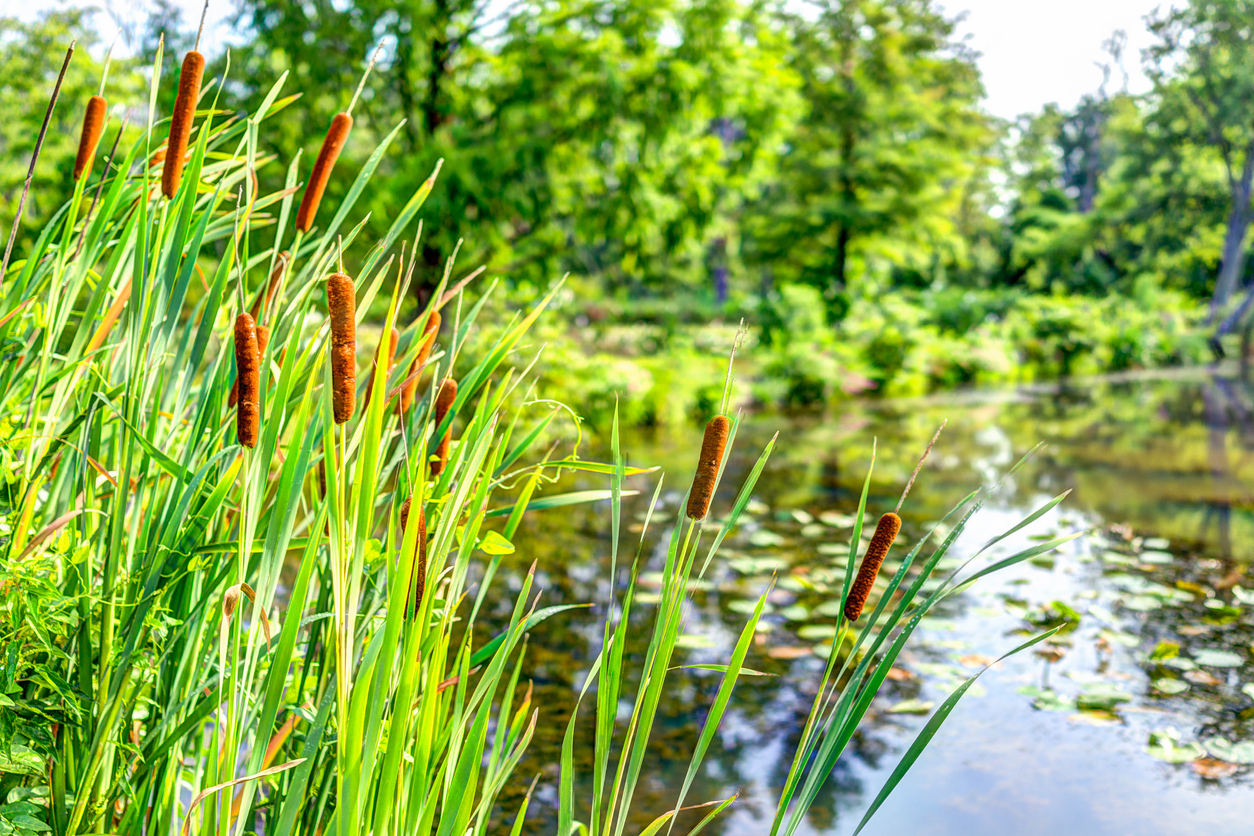Since before the "Age of Wal-Mart", there has been a supermarket at the edge of nearly every marsh, pond, and lake, but one that is seldom visited by the passerby. Now, that's not to say that we don't often see the majestic cattail. In fact, we grow up knowing how to identify it. The tall green stalk grows up to 9 feet tall and its brown cigar-shaped flower is known to grace wetland ecosystems around the world. What few people know are the numerous utilitarian qualities the cattail possesses.
From spring to summer, cattail shoots offer a nutritious treat. One must simply peel away the outer layers of the base of the cattail to reveal a white inner core that is slightly sweet and has a refreshing taste, similar to cucumber or zucchini. While they are good raw, they are also especially tasty when sautéed with wild carrots and ginger. The shoots are like a multivitamin, providing beta carotene, niacin, riboflavin, thiamin, potassium, phosphorus, and vitamin C.
It is best to try to harvest the cattail shoots after a short dry spell so that you are not wading through as much muck and guck, even though this can make cattail harvesting more adventurous, especially for kids. Try to harvest your cattails in a large stand, rather than a small one, to lessen the impact you will have on the overall system. While you are collecting them you may notice a sticky gelatinous substance that comes off onto your hands. This is a type of starch and can be saved to use for thickening soups.

Cattails
The shoot is not the only part of the cattail that is beneficial. Once the flower heads ripen, towards the middle of summer, sweet gold pollen can be harvested as well. Just shake the flowers into a bag and add the pollen to baking flour as a vitamin supplement for muffins, bread, and pancakes. The pollen can also be sprinkled on top of cereal and yogurt for an extra morning boost.
The brown flower heads of the cattail will eventually turn white and fluffy. This fluff makes excellent tinder for starting a fire. It burns fairly slowly and gives off a natural insect repellent. The soft seeds can also be used as stuffing for pillows or toys, but beware since they have been known to cause an allergic reaction in some people. The cattail's intentions are to send these seeds flying out into the wind to form new cattail colonies. There are thousands of seeds per cattail flower, so harvesting this fluff is not detrimental to the plant population.
If you intend to harvest the shoot and the pollen, you may have some green leaves left over. Don't throw them away! These can be used to create a number of different craft projects such as floating ducks and cattail dolls or even for weaving waterproof mats and baskets. Believe it or not, the cattail has much more to offer people and animals than has been mentioned here. I invite you to find your local wetland and explore the cattail supermarket, just be sure to know the plant collecting regulations where you are. Enjoy!
If you are interested in herbs, edible plants, and butterfly gardens consider visiting one of our state park or reservoir interpretive centers. Several have interpretive gardens and all offer a wide variety of nature and history programs.
